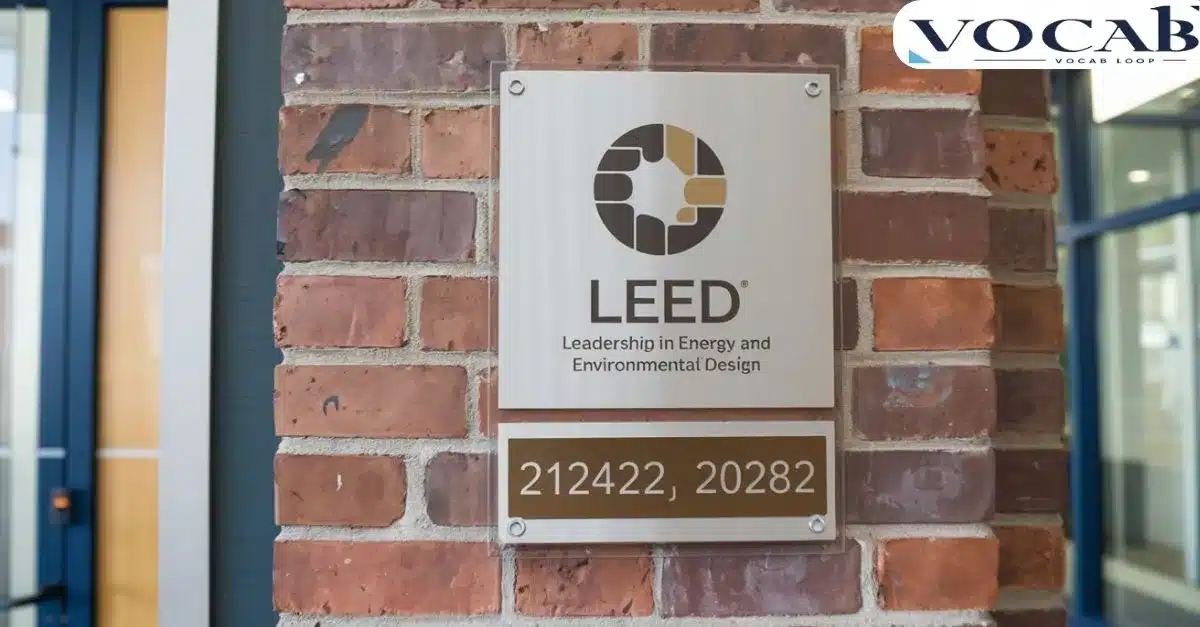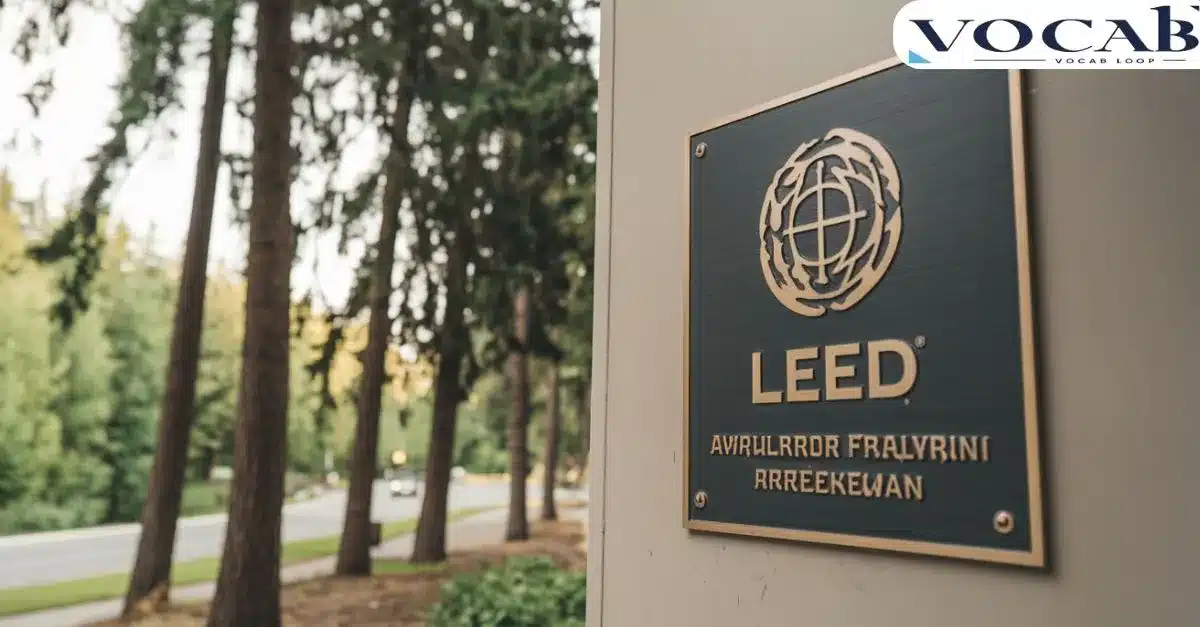Many people confuse the terms lead or LEED due to their identical pronunciation, but their meanings and usage differ drastically. People use ‘lead’ as a versatile word across various contexts, from leadership roles to metal properties, while ‘LEED’ stands for a globally recognized certification system for sustainable buildings.
Knowing when to use each term correctly is crucial for avoiding misunderstandings, whether you’re discussing environmental standards, guiding someone, or referring to the element lead. Let’s explore these terms in-depth to clear any confusion and provide you with a comprehensive understanding.
What Do They Mean?
Lead:
Lead is a word with multiple meanings, serving as both a verb and a noun. It can describe the action of guiding or influencing someone, the position of being in charge, or a particular type of heavy metal.
- Pronunciation Guide: Lead (verb) is pronounced /liːd/; Lead (noun referring to metal) is pronounced /lɛd/.
LEED:
LEED stands for Leadership in Energy and Environmental Design, a rating system developed by the U.S. Green Building Council (USGBC) to promote eco-friendly building practices. Organizations award LEED certification to buildings that meet specific criteria in sustainability, energy efficiency, and environmental impact.
- Pronunciation Guide: LEED is pronounced /liːd/.
Lead as a Verb

Lead as a verb has several meanings depending on the context in which it is used. Below, we break down the different definitions and provide examples to illustrate each usage.
The Various Definitions of Lead as a Verb
1) To guide a person or animal to a destination
- Definition: To show someone or something the way by going in front.
- Example: “The guide will lead us through the museum.”
- Context: In leadership roles, leading often means guiding a group towards a goal or outcome.
2) To connect one place or object to another
- Definition: To form a route between two points.
- Example: “This path leads to the lake.”
- Context: This use of lead often involves navigation or establishing a physical connection.
3) To result in something happening
- Definition: To cause or bring about a particular result or consequence.
- Example: “This marketing strategy could lead to an increase in sales.”
- Context: In the context of sales or marketing, being a leader means steering initiatives that yield positive outcomes.
4) To influence someone’s thoughts or actions
- Definition: To cause someone to believe or act in a certain way.
- Example: “His statement led me to believe that he was upset.”
- Context: In management, leading often involves persuasion or motivating others to take action.
5) To be the leader of a group or initiative
- Definition: To be in charge of something or someone.
- Example: “She will lead the new project team.”
- Context: In this sense, leadership is about assuming responsibility and guiding others toward success.
6) To be the best or first in something
- Definition: To be at the forefront in a particular field or activity.
- Example: “They lead the market in innovation.”
- Context: Leading in business often refers to a company’s position as a market leader or pioneer in innovation.
Lead as an Adjective
Typically describes something or someone that is most important or dominant in a given context.
- Definition: Most important, principal, or primary.
- Example: “The lead actor received an award for their performance.”
- Context: This is frequently used in film or music, where the “lead” role signifies the central figure in a performance.
Lead as a Noun
Different Uses as a noun
Lead as a noun has a variety of meanings, some of which are completely unrelated to its verb form. Let’s look at the different definitions of lead as a noun:
1) A metallic element (Pb)
- Definition: A soft, heavy metal with the symbol Pb, often used in batteries, weights, and historically in plumbing.
- Example: “The pipes in the old building were made of lead.”
- Context: The usage of lead in construction and manufacturing has decreased due to concerns about toxicity and environmental impact.
2) The principal role in music or film
- Definition: The main or starring role in a performance.
- Example: “She played the lead in the musical.”
- Context: In entertainment, the lead actor or performer is the person with the most prominent role.
3) A dog’s leash
- Definition: A rope or chain used to control a dog.
- Example: “Make sure to hold the dog’s lead firmly when crossing the street.”
- Context: “People commonly use lead for pet control in everyday language”.
4) A wire for conducting electricity
- Definition: A conductor or wire used to transmit electric current.
- Example: “A lead connected the power supply.”
- Context: In electronics, leads are crucial components that facilitate electrical connections.
5) A piece of information that directs someone to a conclusion or action
- Definition: A piece of information, particularly in business or detective work, that suggests a direction for further action.
- Example: “The detective followed a promising lead in the case.”
- Context: In sales and business, a lead refers to a potential customer or opportunity for a deal.
LEED as a Noun

LEED is a certification program that evaluates buildings based on their sustainability, energy efficiency, and environmental friendliness. The U.S. Green Building Council (USGBC) awards it, and it is recognized globally as a symbol of eco-friendly construction.
- Definition: Leadership in Energy and Environmental Design, a green building certification system.
- Example: “The new office building earned LEED Platinum certification for its sustainable design.”
- Context: LEED certification is vital in architecture, urban planning, and construction as it promotes energy-efficient and environmentally sustainable practices.
Origins of “Lead” and “LEED”
Origins of “Lead”:
The word lead derives from the Old English word “lædan“, which means to guide, carry, or bring. Over time, its meanings expanded, especially in Middle and Modern English, where it began to represent concepts like leadership and metal properties.
- Interesting Fact: Since ancient times, people have used the heavy metal lead, but due to its toxicity, industries like plumbing and construction have significantly declined its usage.
Origins of “LEED”:
The U.S. Green Building Council introduced LEED in the 1990s to provide a standard for eco-friendly building practices, encouraging sustainability in construction and development. Today, people recognize LEED-certified buildings for their energy efficiency and reduced environmental impact.
- Fact: Buildings can earn LEED certification at four levels: Certified, Silver, Gold, and Platinum, based on points awarded for meeting certain environmental criteria.
Lead or LEED: When Should you Used?

Lead:
- Use lead when referring to leadership, guiding someone, a metal, or any of its other common usages in English.
- Confusion Tip: Many English learners confuse “lead” with “led.” While lead is the present tense, led is the past tense of the verb. For example, “He will lead the team today” vs. “She led the team last week.”
LEED:
- Use LEED when discussing sustainable building practices or the certification system for green buildings.
- Tip: LEED is always written in all caps since it’s an acronym for Leadership in Energy and Environmental Design.
Other Meanings of “Lead” and “LEED”
Lead has various meanings as both a noun and a verb, while LEED is specific to the field of sustainability and architecture. The table below summarizes the main differences between these terms:
| Term | Definition | Context |
| Lead | To guide, direct, or be in charge (verb); a metal (noun) | Used in leadership, metal industries, electronics |
| LEED | Certification for sustainable buildings | Used in green building, architecture, and urban planning |
Examples in Context

Lead:
- Leadership: “She will lead the team in developing the new marketing strategy.”
- Guiding someone: “The teacher will lead the students to the auditorium for the assembly.”
- Physical connection: “This trail leads directly to the waterfall.”
- Cause and effect: “A balanced diet can lead to better overall health.”
- Influence: “Her speech led the audience to reconsider their stance on the issue.”
- Being the best: “The company leads the industry in innovative technology.”
- Metal: “The ancient pipes were made of lead, but they have since been replaced.”
- Dog leash: “Please keep the dog on its lead while we walk through the park.”
- Electric wire: “The technician replaced the broken lead to restore the connection.”
- Information or clue: “The detective received a lead about the suspect’s whereabouts.”
LEED:
- “The new university campus earned LEED Gold certification for its energy-efficient design.”
- “The architect specializes in designing buildings that meet LEED standards.”
- “Achieving LEED certification demonstrates the company’s commitment to sustainability.”
- “This office complex has a LEED Platinum rating due to its renewable energy usage.”
- “The city council proposed a budget for constructing more LEED-certified buildings.”
- “LEED encourages builders to use recycled materials in their projects.”
- “The conference highlighted the benefits of LEED-certified developments in urban planning.”
- “Adding green roofs and solar panels helped the building qualify for LEED certification.”
- “The hotel is promoting its LEED certification as a key feature to attract eco-conscious travelers.”
- “LEED standards aim to reduce carbon emissions in the construction industry.”
Synonyms for Lead and LEED
Knowing synonyms can help avoid confusion in writing and speaking.
Lead:
- Guide
- Direct
- Influence
- Manage
- Supervise
- Control
LEED:
- Green Certification
- Sustainability Certification
- Eco-friendly Accreditation
FAQs
What is the difference between lead as a verb and noun?
As a verb, “lead” means to guide or direct (e.g., “She will lead the discussion.”).
As a noun, it refers to a metal (e.g., “The pipes were made of lead.”), or a clue or leash.
Can a building lose its LEED certification?
LEED certification is typically awarded for life, but failure to maintain sustainable practices might lead to reputational damage, though certification itself isn’t revoked.
Why is lead (the metal) less commonly used today?
Due to its toxic properties, lead use has declined in plumbing and paint industries. Safer alternatives have replaced it in most applications.
How are LEED levels determined?
LEED certification levels (Certified, Silver, Gold, Platinum) are based on a point system. Points are awarded for meeting specific environmental standards in areas like energy efficiency, water use, and material selection.
What is the past tense of the verb lead?
The past tense of “lead” is “led.” For example, “She led the project successfully last year.”
Conclusion
The terms lead and LEED may sound alike, but they carry distinct meanings that are essential to understand. Whether you’re talking about leading a group, referring to the metal lead, or discussing LEED certification for environmentally friendly buildings, it’s important to use the correct term to convey the intended message.
Mastering the difference between lead and LEED will enhance your communication, whether you’re an English learner or a sustainability professional.By recognizing the subtle differences and context for each term, you’ll avoid common pitfalls and convey your ideas more accurately.

Alex Hormozi is a seasoned blogger at Vocab Loop, known for his deep insights into language, vocabulary, and grammar. With years of experience in writing, Alex shares practical tips and effective strategies to help readers improve their linguistic skills and enhance their writing abilities.

